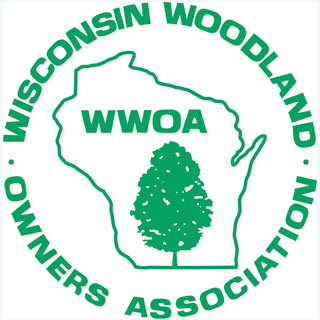Government Affairs
DNR Retiring Hunt Wild Wisconsin Mobile App
App Users Encouraged To Use Online Hunting Resources MADISON, Wis. – The Wisconsin Department of Natural Resources (DNR) today announced that as of June 29, 2023 the Hunt Wild mobile application will be retired. Instead, hunting and regulation resources can be found on the DNR’s Hunting webpage. The Hunt Wild mobile application was launched in 2018 to provide mobile access to hunting information.
USDA Seeks Donations Of Infested Ash Trees
Posted on May 5, 2023 By Kyle Loughlin, Field Team Lead, USDA-APHIS kyle.m.loughlin@usda.govor 734-732-0025 USDA staff cut a ‘bark window’ in green ash to uncover signs of emerald ash borer. Photo: US Department of Agriculture The U.S. Department of Agriculture (USDA) is asking Wisconsin landowners for help in the battle against emerald ash borer (EAB). EAB is an invasive insect from Asia that was first introduced into the United States in 2002.
Apply by May 19, 2023 to Receive Funding to Help Protect Natural Resources
Joint Chiefs’ Partnership Supports Forestry and Wildlife Conservation in Northeastern Wisconsin The Northeast Wisconsin Forestry and Wildlife Partnership project has been developed through the Joint Chiefs’ Landscape Restoration Partnership (JCLRP) to address wildfire threats, water quality, and wildlife habitat. The JCLRP enables the U.S. Department of Agriculture Natural Resources Conservation Service (NRCS) and the U.S. Forest Service to collaborate with agricultural producers and forest landowners focused on conservation and restoration efforts.
2023 Spring Hearings Statewide Results
The Wisconsin Department of Natural Resources (DNR) today announced the 2023 Spring Hearing questions and results are now available. More than 11,500 people responded to the 2023 Spring Hearing questionnaire available online April 10-13. The annual Spring Hearing is an opportunity for the public to provide input on a wide array of natural resources-related proposed rule change questions presented by the DNR and advisory questions presented by the Conservation Congress.
Gov. Evers Announces Forestry Budget Initiatives
Governor Evers Announces Budget Initiatives to Bolster Conservation, Strengthen Forest Industry MADISON — Gov. Tony Evers today will visit Milwaukee’s Arborist Apprenticeship Program to highlight his 2023-25 biennial budget initiatives to strengthen Wisconsin’s forest regeneration and management, take preventative action against invasive species, and expand the forestry industry workforce across the state.
DNR Confirms CWD In Wild Deer In Winnebago County – Public Meeting Set
MADISON, Wis. – The Wisconsin Department of Natural Resources (DNR) confirms a wild deer tested positive for chronic wasting disease (CWD) in Winnebago County in the town of Nepeuskun. This positive is also within 10 miles of the Waushara County, Green Lake County and Fond du Lac County borders.
Douglas Co Quarantined for Spongy Moth (formerly Gypsy Moth)
Trapping data collected by the Wisconsin Department of Agriculture, Trade and Consumer Protection (DATCP) indicates that the spongy moth (formerly Gypsy Moth), an invasive insect from Europe that feeds on the leaves of more than 300 tree species, is now established in Douglas County. As a result, this county has been placed under state and federal spongy moth quarantine, joining most of eastern and central Wisconsin already considered to be infested with the pest.
WI Conservation Congress and DNR to Host Open Houses in All Counties
WWOA members are encouraged to participate in both of these activities – the WDNR Open Houses and the online Wisconsin Conservation Congress Spring Hearings online survey. Questions on the survey are not just about hunting and fishing regulations or issues. Your input on natural resource issues ranging from banning the Fall shining of wild animals, lead poisoning of eagles, hazardous wakes from wake surfing boats, to mining regulations is important!
WDNR Division of Forestry, 5-year Strategic Direction published
The Wisconsin Department of Natural Resources (DNR)’s Division of Forestry’s Strategic Direction is a five-year plan that builds off of the Wisconsin forestry community’s 10-year Statewide Forest Action Plan. It allows us to connect our vision for the future using tangible strategies and actions.
Governor signs Managed Forest Law bill – AB 909/SB 913
Today, the Governor’s office announced that he had signed AB 909 (now Act 230) with changes to the Managed Forest Law program. Act 230, makes a number of changes to the Managed Forest Land (MFL) program, including modifying the 20-acre eligibility threshold by allowing two noncontiguous 10-acre parcels to qualify for enrollment into the program, creating an exception to the prohibition on buildings and improvements on MFL parcels, and requiring the DNR to promulgate separate…
